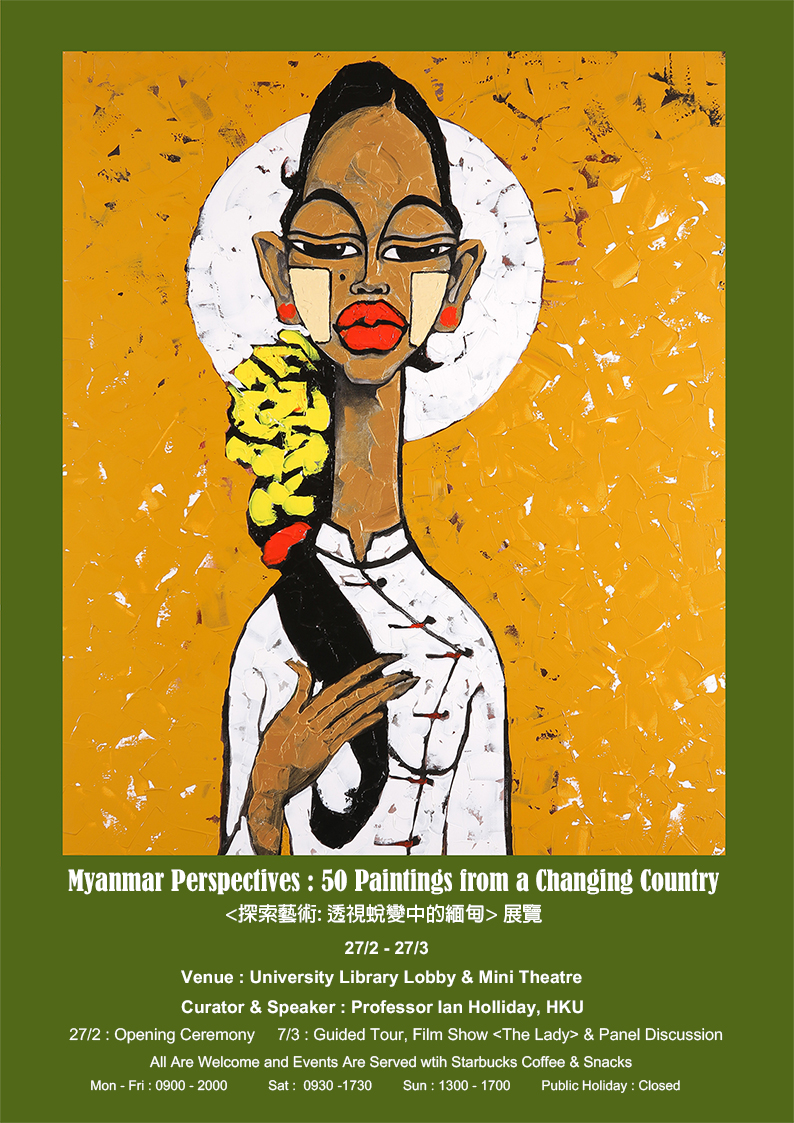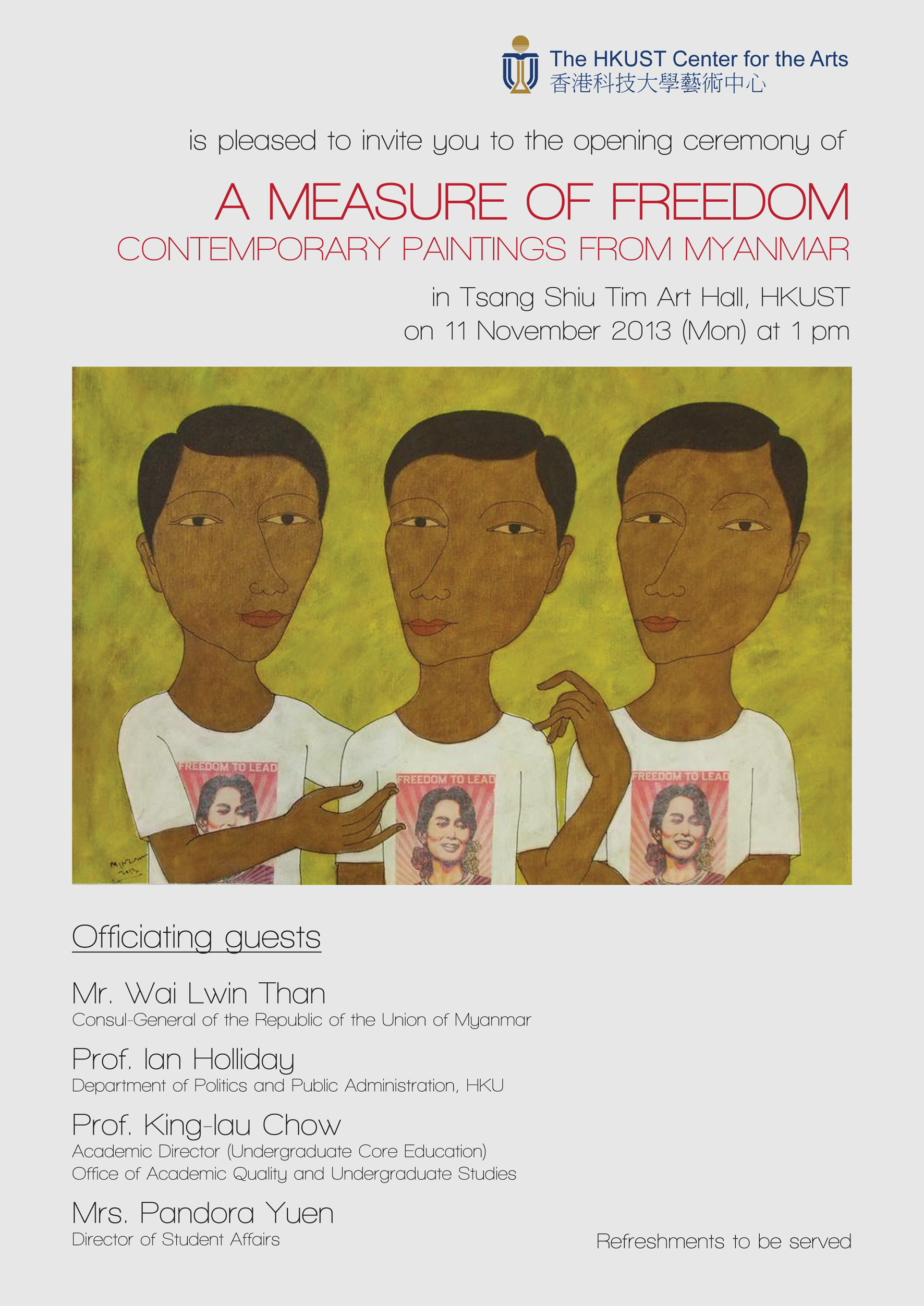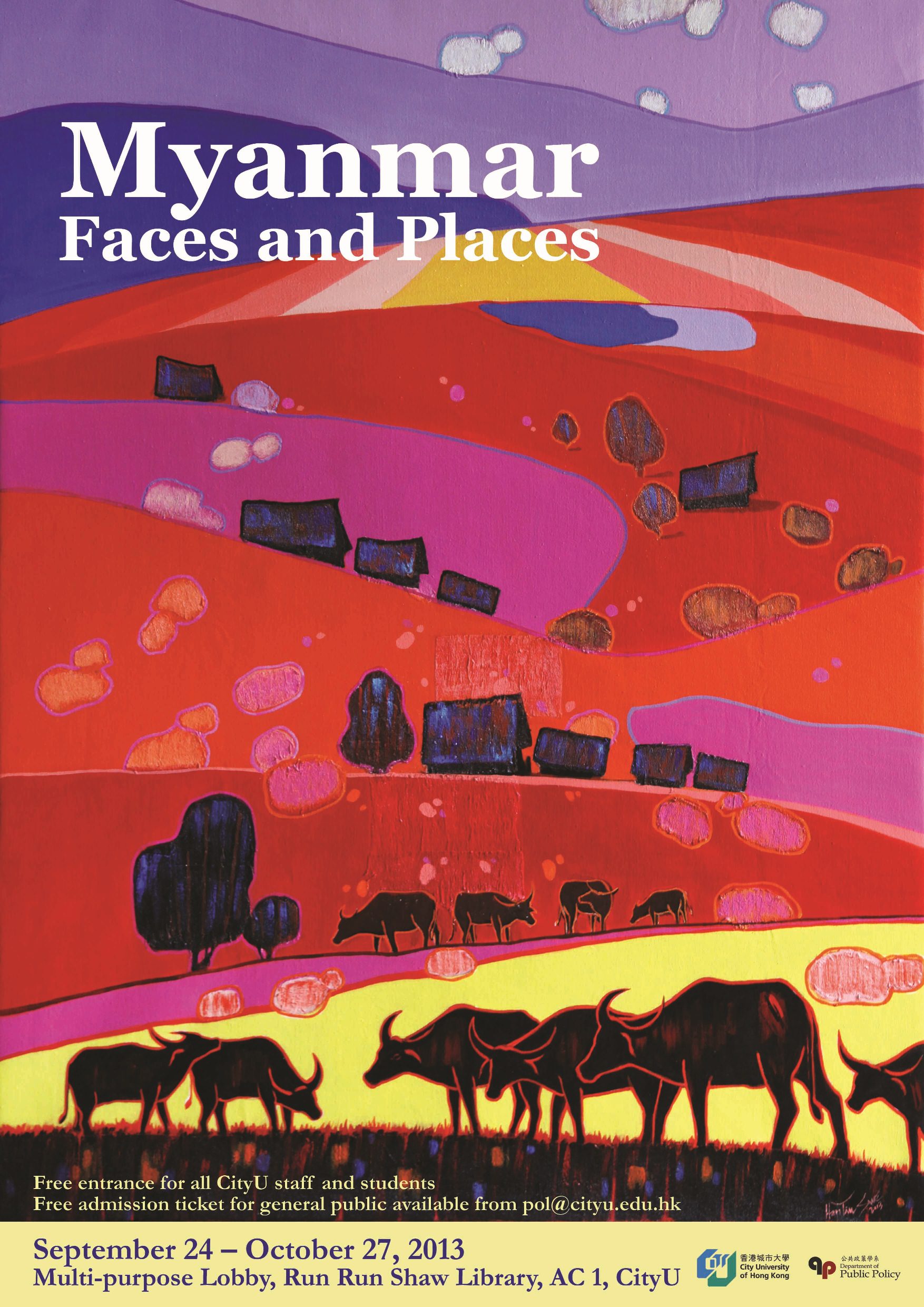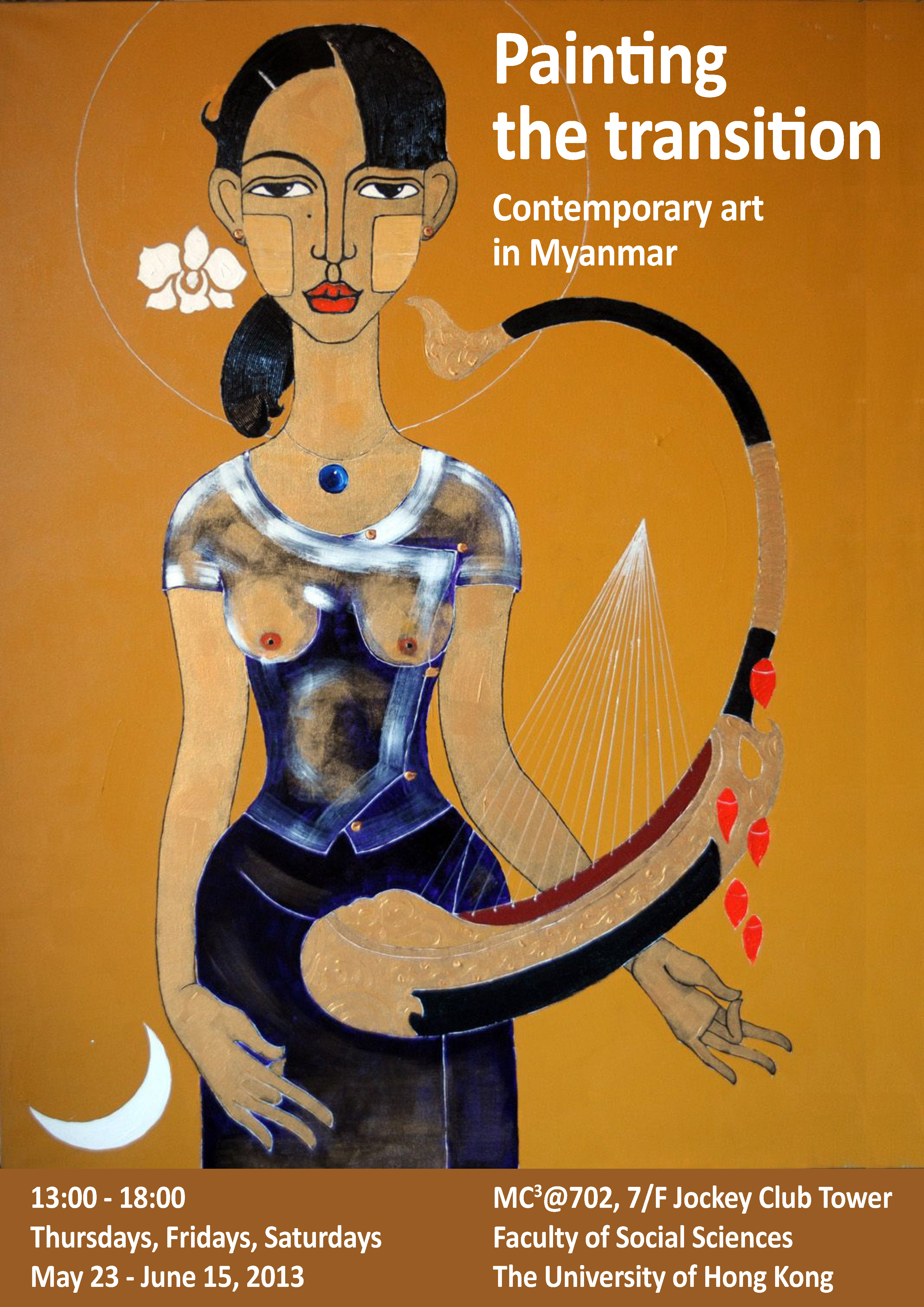Category Archives: Shows
Workshop on Politics, Business and Human Rights in Myanmar

Written on May 22, 2014
Murdoch University
May 29, 2014
Myanmar’s politics and economy has been military dominated for some 50 years. With that weight now somewhat reduced, the country is in a state of rapid change. What are the opportunities and challenges? What does reform mean for markets and politics? How will poverty, inequality and rights be addressed? In this Workshop, four leading experts assess these questions and Myanmar’s future.
The Workshop will be followed by a reception to acknowledge the generous gift of 20 contemporary Myanmar paintings to the Asia Research Centre and Murdoch University by Professor Ian Holliday. All participants are welcome to join the reception and view a selection of these art works.
Myanmar Perspectives: 50 Paintings from a Changing Country

Written on February 18, 2014
Lingnan University
February 27 – March 27, 2014
For three years since the installation of a quasi-civilian government in March 2011, Myanmar has experienced a large number of reforms. At a time when analysts are struggling to assess the political, economic and social significance of those reforms, this exhibition adopts a somewhat different perspective.
Looking through the eyes of more than a dozen contemporary artists, it presents 50 paintings from a changing country. Alongside openly political images, which until very recently would have been banned by state censors, are depictions of daily life in villages and towns during a period of transition, of religious beliefs and symbols, and of disparate ethnic groups and identities.
A Measure of Freedom: Contemporary Paintings from Myanmar

Written on February 9, 2014
The Hong Kong University of Science and Technology
November 11-24, 2013
For most of the recent past, the country known today as Myanmar and until 1989 as Burma was subject to strict authoritarian rule. In 1962, a harsh state socialist regime was instituted with overt military backing. In 1988, collapse of that system at a time of mass protest for democracy resulted only in installation of a formal military junta. Not until 2011 was the junta finally dissolved and control handed to a quasi-civilian government that soon set about implementing a series of major reforms.
Myanmar: Faces and Places

Written on February 8, 2014
City University of Hong Kong
September 24 – October 27, 2013
In Myanmar, a gradual removal of strict authoritarian controls over the past couple of years has enabled creative artists to give increasingly free rein to their talents. The weight of censorship was perhaps never quite as heavy for painters as it was for writers and film makers, because government officials typically had little understanding of their art, and limited concern about its political impact. Nevertheless, in the long dark night of state socialism from 1962 to 1988 and then military rule from 1988 to 2011, many subjects were taboo, many styles were frowned upon, and even some colours were banned. Today, almost all of these restrictions have been lifted, and any residual censorship is generally light-touch. At the same time, Myanmar’s rapid reopening to the outside world has triggered renewed global interest in its cultural landscape and heritage. The result is an explosion of artistry and flair inside the country.
Painting the Transition: Contemporary Art in Myanmar

Written on February 7, 2014
The University of Hong Kong
May 23 – June 15, 2013
Coming in from the cold after 50 years of austere dictatorship, Myanmar is currently testing the boundaries of a raft of new freedoms. Rigid controls were not dismantled overnight, but a March 2011 switch from military junta to quasi-civilian rule has slowly created space for meaningful self-expression. Finally people can breathe a little.
More than two years on, activists routinely take to the streets of major cities to protest government policy, journalists pursue breaking stories up and down the land, hawkers beguile tourists with long banned symbols of opposition, and ordinary citizens daily raise their sights just a little higher.

